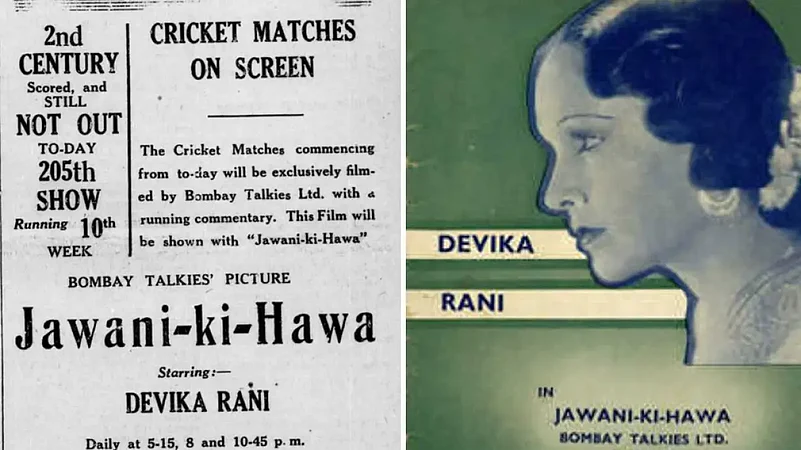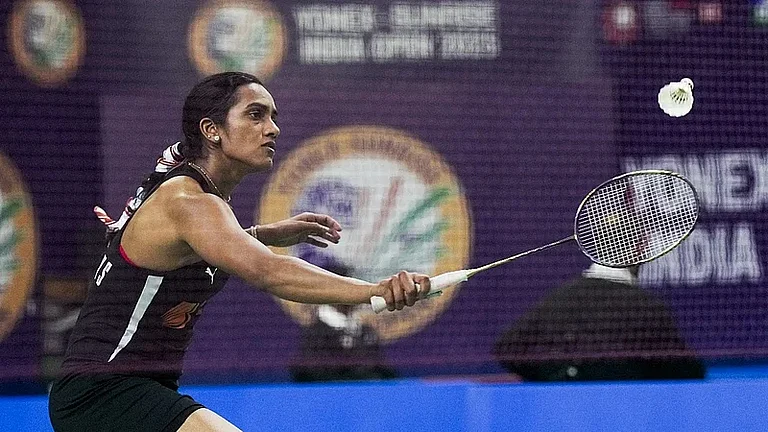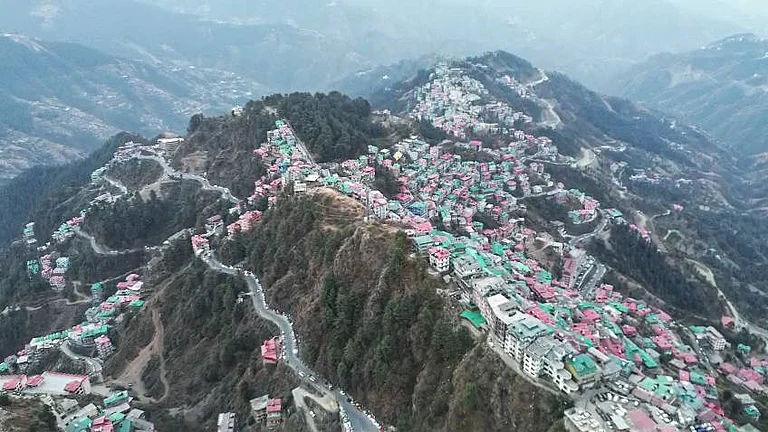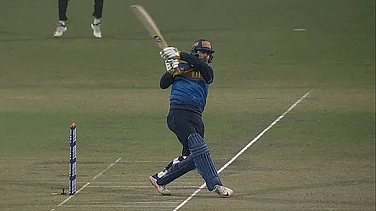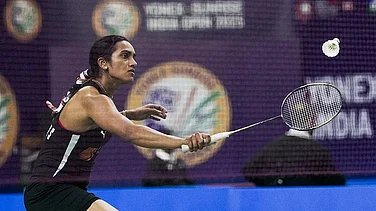With the IPL broadcast rights up for grabs and a host of channels and OTT platforms going all out to bag the lucrative and coveted cricket property soon, the television viewership of Indian cricket has once again come under the spotlight. Incidentally, the ongoing global media rights for the marquee Indian tournament were bagged by STAR India for a staggering sum of Rs 16,347.5 crore with the tenure of 2018-2022. However, very few Indians know about the company that probably held the first-ever broadcast rights in Indian cricket and an almost forgotten film that made it possible. (More Cricket News)
Bombay Talkies bowled over cricket
Believe it or not, the Bombay Talkies, jointly founded by the first power couple of Indian cinema, Devika Rani and Himansu Rai, bagged the first-ever cricket broadcast rights in India. Way back in 1935, the pioneering Bollywood film studio acquired the broadcast rights for the entire Bombay Quadrangular of the 1935-36 season and screened the intensely fought, communally-charged matches alongside its maiden feature film, Jawani-ki-Hawa, at Mumbai’s Imperial Cinema.
Several print advertisements were published in Mumbai newspapers, promoting the film screening at the Lamington Road theatre, and tagging it along with the cricket broadcasting venture of the Bombay Talkies. “The exclusive rights of filming the Quadrangular Cricket matches together with the matches to be played on the occasion of the Australian tourists’ visit to Bombay has been acquired by the Bombay Talkies’ Ltd.,” a Bombay Chronicle, a no-defunct newspaper, snippet wrote, while also mentioning about then upcoming unofficial Test series by Jack Ryder’s rag-tag Australian squad.

“This film which will be accompanied by a running commentary throughout will be shown at the Imperial Cinema along with Jawani-ki-Hawa.” Those, therefore, who cannot go to the matches can still enjoy all the excitement and thrills of the play by seeing the cricket film at the Imperial with the additional treat of the feature film…,” the small news item added.
A pathbreaking whodunnit saga
Rani and Rai, already married, had shared the screen in the lead roles for their landmark film Karma (1933) which created quite a flutter with a revolutionary four-minute-long kissing scene. Incidentally, the archaic society-defining and ahead-of-time lip-locking between the real-life spouses also paved the way for the foundation of one of India’s first professional and western-style film production houses.
Thus, the Bombay Talkies was born in 1934. With its avant-garde actress-cum-co-owner at the helm, the premier studio soon launched their debut venture, Jawani-ki-Hawa, in 1935, a crime thriller starring Rani and newcomer Najam-ul-Hassan. It was a whodunnit murder mystery believed to be inspired by Agatha Christie’s magnum opus Murder on the Orient Express, released in the previous year (1934).
Directed by German pioneer of Indian cinema Franz Osten and written by Niranjan Pal, son of eminent freedom fighter Bipin Chandra Pal (of Lal-Bal-Pal fame), Jawani-ki-Hawa also became one of the first films to be shot inside Mumbai’s iconic Chhatrapati Shivaji Terminus, then called the Victoria Terminus. In fact, the Great Indian Peninsular Railway, the predecessor to the Central Railway, granted permission to the film unit to shoot at the VT platform and generously offered its various facilities to the film that revolved around an eventful train journey of its protagonists.
Scoring with Quadrangular
As the film entered its 10th week, the first Quadrangular game that was filmed and shown at the theatre by the Bombay Talkies was the one between the Muslims and the Europeans, played at the Bombay Gymkhana Ground, between November 16 and 18, 1935. The likes of the then Indian Test players such as Syed Wazir Ali, Syed Mushtaq Ali, Mohammad Nisar played the game against the predominantly English side led by future Ranji Trophy-winning captain of Bengal, Thomas Cuthbert or TC Longfield, whose son-in-law Ted Dexter led England in Tests a few decades later.

However, it was the blistering pace of Nisar that won, probably, the first-ever broadcast-rights holding game in Indian cricket. An in-form Nisar continued his sublime form from the Bori Bunder End in the much-anticipated Quadrangular final against the formidable Hindus as Wazir Ali’s team won the tournament filmed and produced cross-promoted and screened by the Bombay Talkies alongside Jawani-ki-Hawa
Pioneers playing together
The pathbreaking but later-forgotten debut production of the famed studio with its prima donna and co-owner Rani in the lead role ushered in cricket filming and screening in India and set many firsts in the history of Indian cinema.
A slew of foreign technicians, including Bavarian filmmaker Osten as director, his fellow Germans, Joseph Wirsching as cinematographer, Karl von Spretti as set designer, and Brit Len Hartley as a sound recordist, alongside a bunch of gung ho young Turks like Sashadhar Mukherjee, who joined the sound department, J.K. Roy, the art director, Saraswati Devi, the Parsee music composer whose real name was Khorshed Minocher-Homji, and a certain Kumudlal Kanjilal Ganguly, a rookie technician at the processing labs, not only put together the first-ever Bombay Talkies production but also contributed to the filming and packaging of the first-ever cricket broadcast in India.
But despite the runaway success of the film, a disgruntled Rani, plagued with marital discord with Rai, literally ran away. She stumped her husband Rai with an almost unplayable googly when she eloped to Kolkata (then Calcutta) with her co-actor Hassan. The leading lady of Indian cinema also caught the Bombay Talkies team off guard with her intention to switch over to their arch-rivals New Theatres, in the Bengal capital. However, after much deliberation and persuasion, Rani did return to a bamboozled Rai and his then-famous studio for a second innings, leaving her paramour and the lead actor of Jawani-ki-Hawa in the lurch for good. Hassan’s one-film innings in Bombay was over even though his film continued to score big at the box office. One of the matchday newspaper advertisements of Jawani-ki-Hawa, promoting its continuous run at Imperial Cinema, read: “2nd century scored, and still not out today 205th show running 10th week.”
Dadamoni’s inconspicuous debut
Meanwhile, lab technician Ganguly, whose first job onboard at the Bombay talkies was of a camera assistant, was brought in the middle, thanks to his brother-in-law Mukherjee, for Jeevan Naiyya (1936), the next movie of the famed production house. After making his screen debut with that minuscule cameo appearance in Jawani-ki-Hawa, Ganguly was rechristened as Ashok Kumar for the lead role in Jeevan Naiyya (1936) and went on to play one of the longest innings in the history of Indian cinema.
On the other hand, Imperial Cinema that staged the first-ever screening of rights-holding cricket broadcast in India, catapulted Amitabh Bachchan to stardom when Zanjeer completed 50 weeks at the box office many decades later, in the 1970s. But with the cricket broadcast rights selling deals of Indian reaching an astronomical height in the modern era, the first known rights holders, the Bombay Talkies, ceased to exist in 1953 while the century-old dilapidated Mumbai theatre, which was built in 1905 as an orchestra theatre, has been the shadow of its glorious past, thriving on screening sleazy movies. Moreover, it’s an early chapter in India’s cricketing history that has been erased with time.
(Suvam Pal is a journalist, author & documentary filmmaker)






